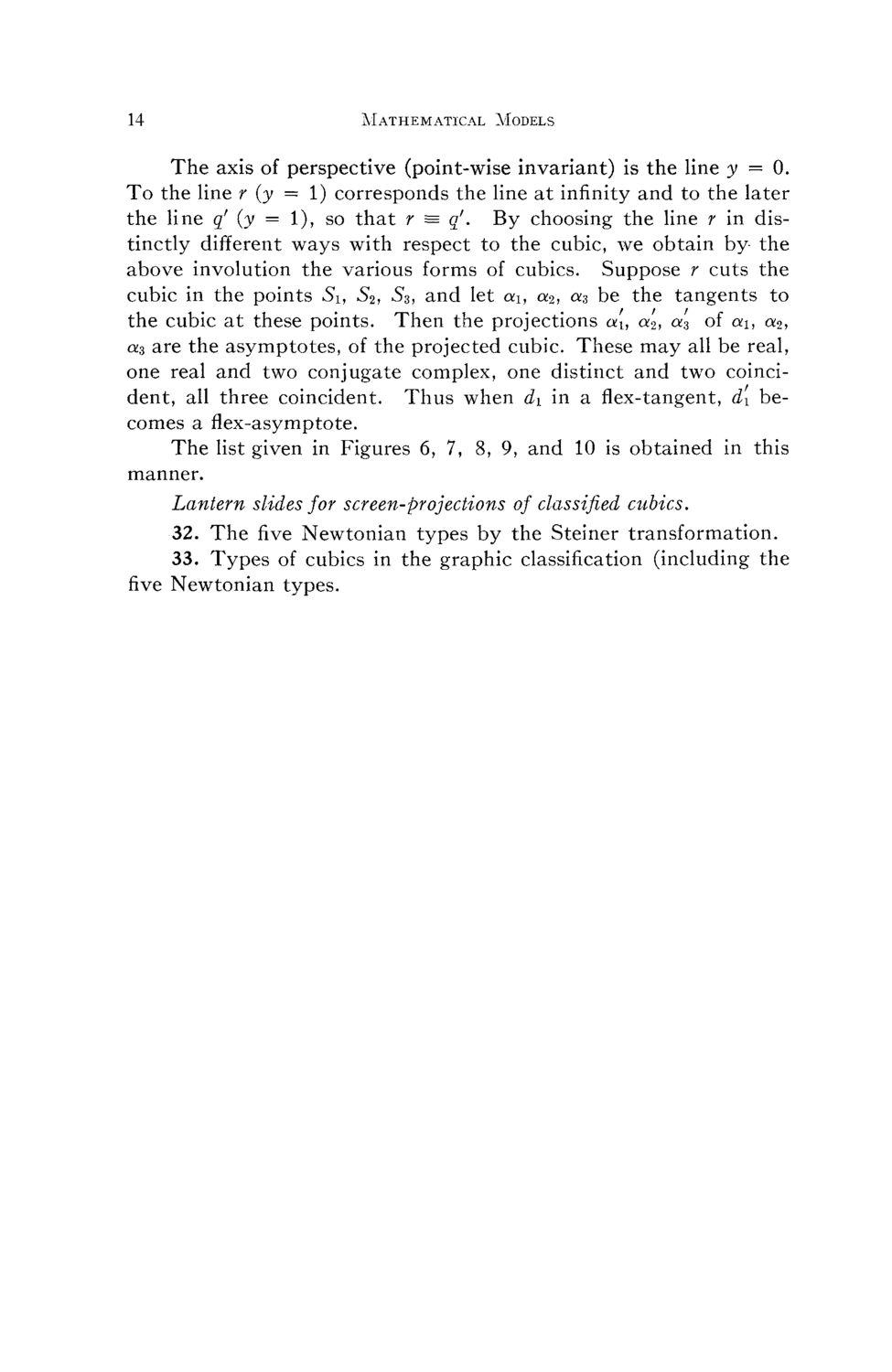| |
| |
Caption: Mathematical Models by Arnold Emch - Series 4 (1928)
This is a reduced-resolution page image for fast online browsing.

EXTRACTED TEXT FROM PAGE:
14 Mathematical Models The axis of perspective (point-wise invariant) is the line y = 0. T o the line r (y = 1) corresponds the line at infinity and to the later the line q' (y = 1), so that r = q'. By choosing the line r in distinctly different ways with respect to the cubic, we obtain by the above involution the various forms of cubics. Suppose r cuts the cubic in the points Si, S2, S3, and let «i, a2, a3 be the tangents to the cubic at these points. Then the projections au a2, a3 of «i, a2, as are the asymptotes, of the projected cubic. These m a y all be real, one real and two conjugate complex, one distinct and two coincident, all three coincident. Thus when d\ in aflex-tangent,dx becomes a flex-asymptote. The l s given in Figures 6, 7, 8, 9, and 10 is obtained in this it manner. Lantern slides for screen-projections of classified cubics. 32. The five Newtonian types by the Steiner transformation. 33. Types of cubics in the graphic classification (including the five Newtonian types.
| |